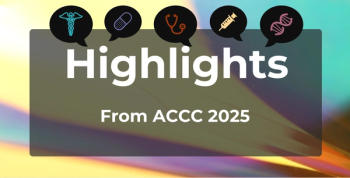
Surprise: Express Scripts Data Show Statin Use Fell After New Cholesterol Guideline
The 2013 guideline update from the American College of Cardiology and the American Heart Association drew criticism when it was presented. Data presented in today's poster session at the ACC Scientific Session revealed unexpected results.
Fears that statin prescriptions would soar following a controversial 2013 guideline change for treating low-density lipoprotein (LDL) cholesterol have not yet materialized, at least according to data from Express Scripts, the nation’s largest pharmacy benefits manager.
An abstract tucked away at Sunday morning’s poster session at the 65th Scientific Session of the American College of Cardiology (ACC) shows that new prescriptions for statins, dose changes, drug changes and discontinuations of statins all fell after implementation of the new guideline, which ACC adopted in tandem with the American Heart Association (AHA) more than 2 years ago.
The guideline caused an uproar when it was unveiled in November 2013 at the AHA meeting in Dallas, Texas. It was projected that many more people would end up taking statins, and critics said people who didn’t need statins would be asked to take them.
But based on early data from Express Scripts, that’s not happening, at least not so far. The study’s lead author, Frederick Spencer Gaskin, MD, PhD, a fellow at Washington University in St. Louis, Missouri, said it’s hard to interpret exactly what is occurring, but that the data surprised him. The next batch will be available in May, he said, adding, “I’m curious what we’ll see at the 2-year mark.”
Â
Data showed that after change, new statin initiation was 16.1% less likely, a dose change was 13.2% less likely, a change to a different statin was 19.3% less likely, and a discontinuation was 3.9% less likely.
Â
ACC and AHA implemented the guideline to address the needs of patients at increased risk of atherosclerotic cardiovascular disease (CVD). New recommendations called for moderate- or high-intensity statin therapy for 4 groups:
·        Patients who have CVD
·        Patients with and LDL, or “bad” cholesterol of 190 mg/dL or higher
·        Patients with type 2 diabetes who are between 40 and 75 years of age
·        Patients with an estimated 10-year risk of CVD or 7.5% or higher, who are between 40 and 75 years of age, based on a new CVD calculator developed under the guideline.
Although the new guidelines were developed with the National Heart, Lung and Blood Institute and based on evidence, they were such a departure from what clinicians were accustomed to that many announced they would not follow them. The biggest departure was the abandonment of the old “treat to target” principle in favor of the calculator, which seemed less intuitive to some physicians.
Some physicians could be confused, but some could have fallen into overprescribing and are now reading the new guideline closely, Gaskin told The American Journal of Managed Care during the poster session.
To conduct the study, Gaskin and other researchers used an integrated pharmacy and medical claims database of commercially insured patients. They identified those patients who had at least 1 statin pharmacy claim from the 6-month period of November 13, 2011, to May 12, 2012, which was before the new guidelines, and patients who had at least 1 statin claim from November 13, 2013, to May 12, 2014, immediately after the new guideline. These patients were followed for 365 days; to be included, they had to be 18 years old and continuously eligible for the study period.
Data Reported. During the period before the guideline change, 102,679 patients met the inclusion criteria for statins, while only 83,084 met the criteria in the period examined after the change. In the 6-month study period before the change, the number of patients who were started on a statin was 20,587, or 20.1% of the total. After the change, the number who started on a statin was 15,778, or 19.0% of the total.
Before the guideline change, 7172 patients (7.0%) had a dose change, while afterward the number was 5499 (6.6%). The number switching to a different statin fell also, from 9968 (9.7%) to 5822 (7.0%).
In the abstract the researchers report that their analysis found that the guideline change was independently and significantly associated with reduced likelihood of statin initiation. In the interview with AJMC, Gaskin said additional data show that more prescriptions than might be expected are for moderate-strength statins, which he said could mean some physicians are being cautious and not prescribing the highest-strength statins.
Gaskin feels confident that given the controversy, physicians heard about the change. Unlike some others, he sees the 2013 update as a positive change. “To me, it simplifies things.”
Reference
Gaskin FS, Iyengar R, Eatherly M, et al. Impact of new ACC/AHA cholesterol treatment guidelines on statin utilization patterns in the United States. Presented at the American College of Cardiology 65th Scientific Session, Chicago, Illinois. April 3, 2016. Abstract No. 1191-388.
Newsletter
Stay ahead of policy, cost, and value—subscribe to AJMC for expert insights at the intersection of clinical care and health economics.









































